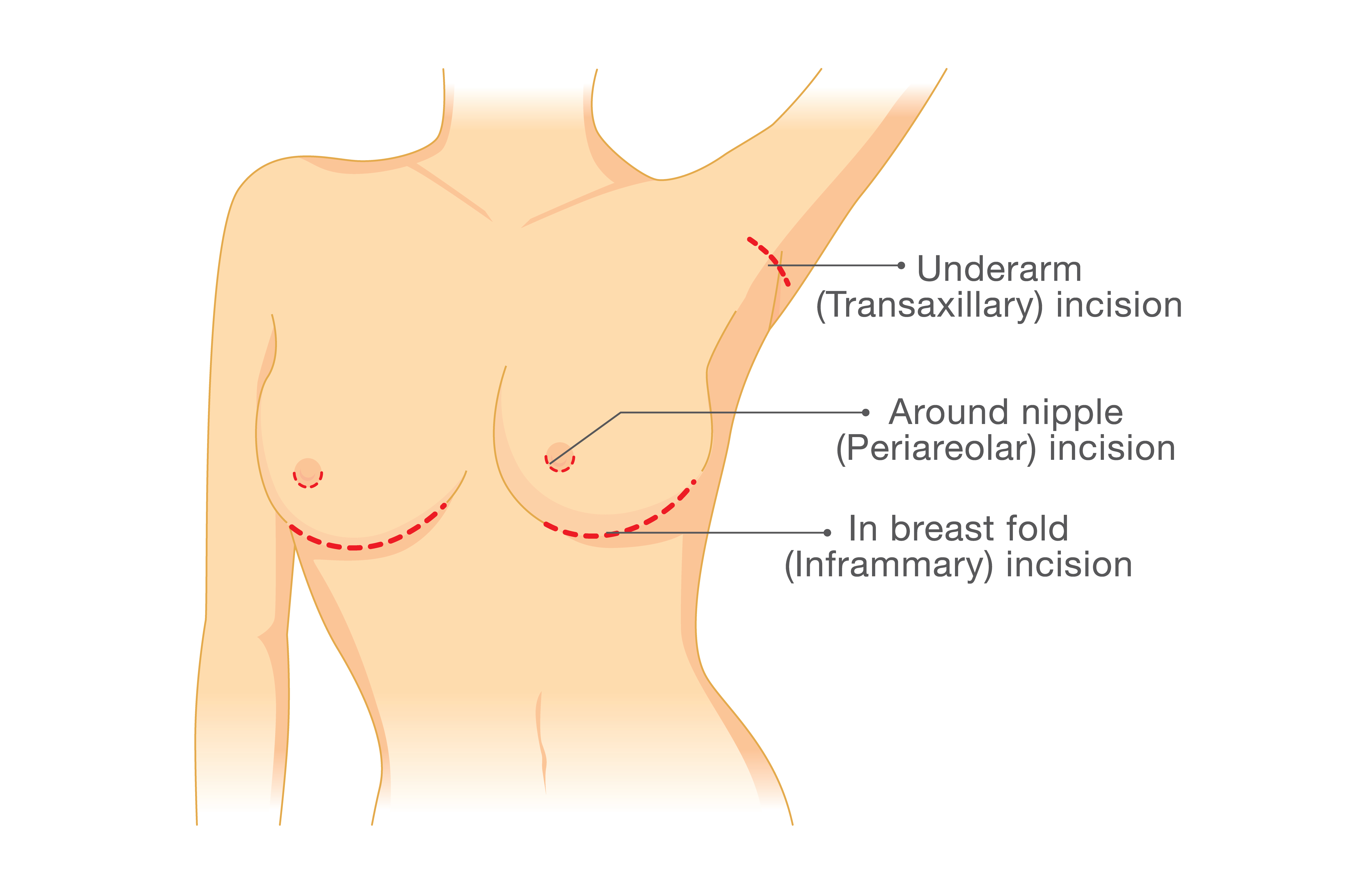
Breast implants become more and more popular nowadays If you wonder why this procedure is so popular, The truth is that breast augmentation is one of the most common plastic surgery procedures performed all over the world
Breast Augmentation is also known as augmentation mammoplasty or breast enlargement. It is a surgical procedure to enhance breast size. During breast augmentation, breast implants are placed under the breast tissue or chest muscles.
Therefore, Breast Augmentation can enhance your breast size and shape, and give you the more confident that you always wanted.
The two main breast implant shapes are called teardrop and round.
There are 2 breast implant shapes available – Round and Teardrop you may have a preference prior to your surgery
Breast Augmentation (Round Shape)
The most common of the implant shapes is the round implant; The round implants are circular in shape. Some women prefer these implants because they provide nice fullness in the upper portion of the breast. These implants also provide a rounder look to the augmented breast. These type of round implants give the appearance of more fullness at the top of the breast. If you want to correct sagging, and are going for a fuller look, round implants may be a good option
Breast Augmentation (Teardrop Shape)
The teardrop implants has more volume near bottom so it looks natural teardrop shape.
Teardrop implants create beautiful and naturally curved breasts. The implants have most of the silicone gel at the lower part of the implant. This makes them suitable for patients seeking more fullness to the lower pole of the breast as opposed to the upper pole.
Breast augmentation can be either conventional or endoscopic approach
Endoscopic Breast Augmentation
Endoscopic Breast Augmentation utilizes an endoscope, which is an instrument that contains two basic parts:A tubular probe that contains a tiny camera and bright light. This is inserted through a small incision.
A viewing screen, which magnifies the transmitted images of the body’s internal structures to a screen that the surgeon views during the treatment. During an endoscopic breast augmentation, the plastic surgeon is able to work easier in positioning breast implants within the patient’s chest wall. Utilizing the same basic techniques incorporated in a regular breast augmentation, the patient benefits from an endoscopic breast augmentation by having fewer scars. This is because endoscopic surgeries tend to leave much smaller scars
Why endoscope?
It creates beautiful and natural looking enhanced breasts without any scarring on the breast. With this approach, patients are left with only a very small scar in the crease of the underarm which is nearly invisible within several months.
Preparation before breast augmentation
• Follow instructions regarding diet, medications, and supplements.
• Stop drinking alcohol at least one week before surgery.
• Stop all smoking and nicotine products for at least 2-4 weeks before your procedure
• Do not take aspirin, ibuprofen, or drugs containing these things for at least two weeks prior to surgery and discontinue Vitamin E, Vitamin C, and all other herbal
• Complete all required lab tests, diagnostic tests, and medical evaluations if needed.
Post operative cares
Pain oral medication might be prescribed to reduce pain. After the surgery, you will have dressing covering incisions sites, you might then be able to shower in another few day. . Some cases, small tube might be placed in each breast to drain off blood and fluids for 1-2 days. Dressing will need to be changed during the first week.
Risk and possible complications
• Infection of the wound
• Slow healing at incision site
• Bleeding or hematoma
• Temporary or Permanent changes in nipple or breast sensation
• Dimpling or wrinkling of the skin around the implant
• Persistent Pain
• Risk of anesthesia
• There can be differences in the size and/or shape of the breasts after surgery.
• Deep vein thrombosis, cardiac and pulmonary complications
• The formation of firm scar tissue around the implant (Capsular contracture)
• Implant can rupture or leak
• Need for Further Breast Surgery
Categories
- FACE
- Blepharoplasty or Eyelid Surgery
- Scarless double eyelids surgery
- Rhinoplasty Augmentation
- Chin Implant
- Alar Reduction
- Augmentation Rhinoplasty and Alar Reduction
- Nose Implant Removal
- Facelift Surgery
- Unilateral and Bilateral Dimple Creation Surgery
- Unilateral and Bilateral Otoplasty
- Lip augmentation
- Cheek Implant
- BREAST
- BODY


